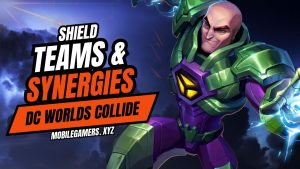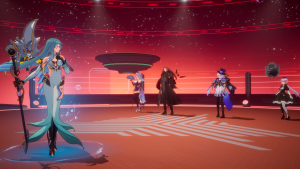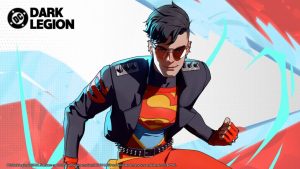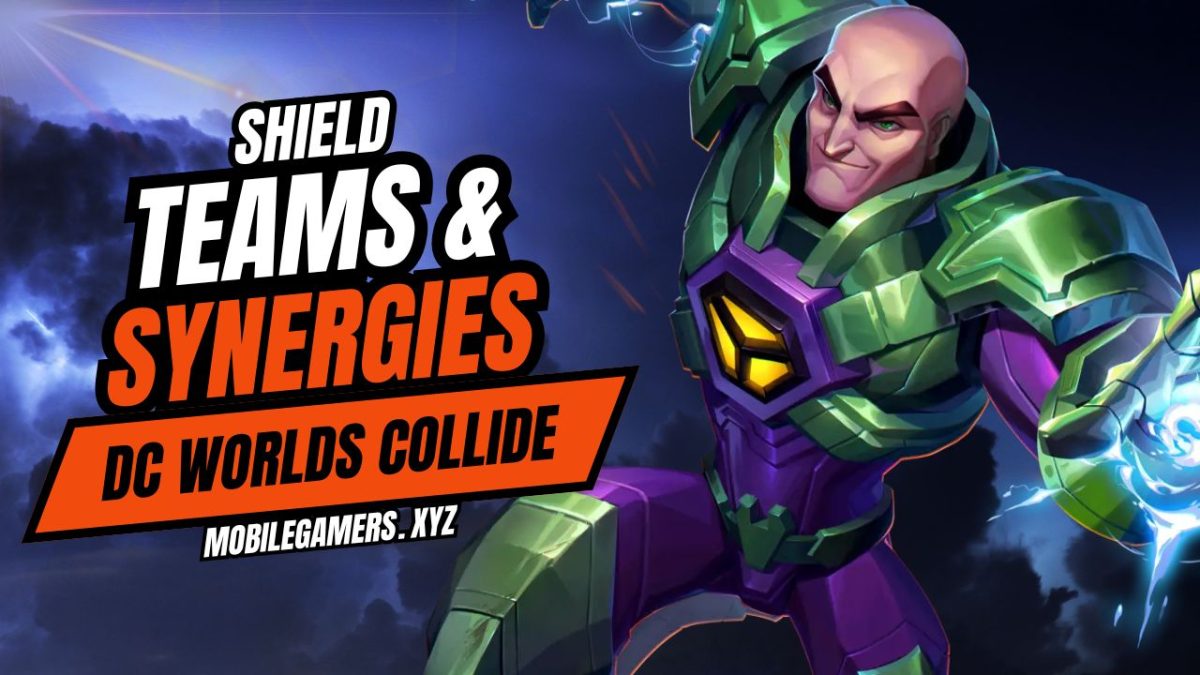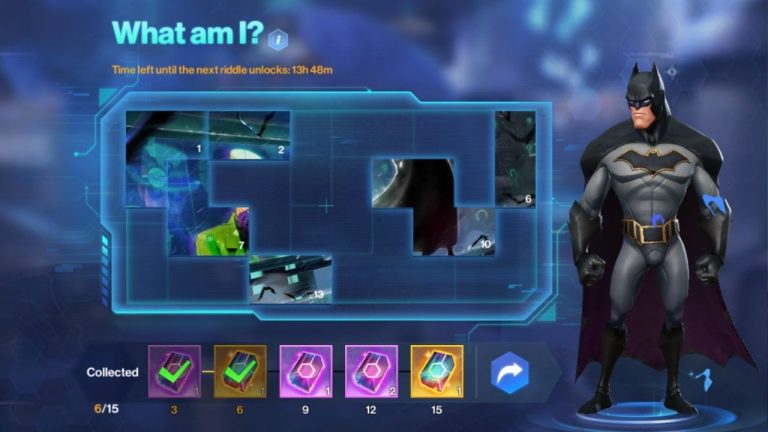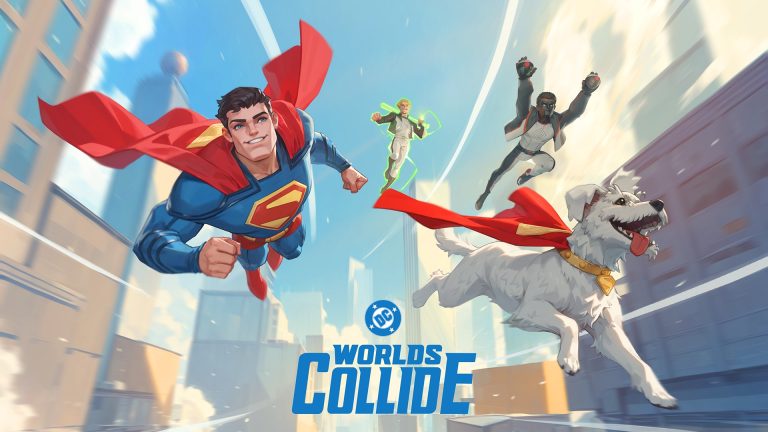In this article we will take a deep dive into Shield Teams, their synergies, Characters that suit these teams and ways you can build an optimal team that is focused around mitigating incoming damage in DC Worlds Collide.
Leader Skills and Their Impact
The core of team building in DC World revolves around leader skills that provide passive bonuses, such as shields, attack boosts, or healing. The analysis prioritizes six key leader skills, with a detailed focus on Lex Luthor’s shield-based synergy, considered the most potent among them.
| Leader Skill | Primary Effect | Optimal Character Types | Notes |
|---|---|---|---|
| Lex Luthor | Grants shields to allies | Shielding characters, tanks, supports | Requires tank + support for full trigger |
| Super Boy | Attack boost | Damage dealers | Less emphasized in this analysis |
| Green Arrow | Critical rate increase | Supports crit-based teams | Not the focus here |
| Batman | Defense boost | Tanks, supports | Less relevant for shield synergy |
| Ocean Master | Anti-blocking/shield interaction | Shield-dependent characters | Anti-synergy with shields |
| Sinestro | Utility/Support | Support characters | Less central |
Key Point: Lex Luthor’s shield synergy is deemed the most effective, especially when paired with characters that can shield or support shields.
Shielding Characters and Their Roles
We take a look at characters that inherently provide shields or benefit from shield-based team compositions. These characters are categorized based on their immediate or scalable shielding capabilities.
Immediate Shielding Characters
- Green Lantern – Jessica: Gains attack stacks with each shield, skyrocketing in value when paired with Lex. Her synergy is exceptional because she benefits directly from shields, making her a top-tier damage dealer.
- Green Lantern – Hal: Similar to Jessica, but considered a better overall option due to more consistent performance and synergy with Lex’s leader skill.
- Pandora: Shields immediately and enhances team performance by boosting Jessica’s effectiveness, making her a valuable support.
Build-Up Shielding Characters
- Green Lantern – John: Becomes significantly more effective in late-game scenarios after building up his shields, making him a formidable tank and support.
- Zatanna: Provides crit buffs via the Frantic mechanic, synergizing well with Wonder Woman and other crit-dependent characters.
| Character | Shielding Type | Strengths | Weaknesses |
|---|---|---|---|
| Jessica Green Lantern | Immediate | High damage potential | Resource-intensive to upgrade |
| Hal Jordan | Immediate | Versatile, strong synergy | Slightly less damage than Jessica |
| Pandora | Immediate | Supports shields, buffs team | Limited damage output |
| Green Lantern – John | Build-up | Late-game tank, scalable | Less effective early game |
| Zatanna | Support buff | Crit buff, synergizes with Wonder Woman | Not a shield provider |
Synergistic Character Combinations
So… what are the most optimal team compositions that maximize shield synergy, focusing on characters that complement Lex’s leader skill.
Top Synergistic Teams
| Team Composition | Key Characters | Highlights | Notes |
|---|---|---|---|
| Shield-Heavy Core | Lex Luthor, Green Lantern – Jessica, Hal Jordan, Pandora, Cheetah | Maximize shields, damage, and support | Requires tank + support for full synergy |
| Balanced Shield & Crit | Lex Luthor, Wonder Woman, Zatanna, John Stewart, Cheetah | Combines shields with crit buffs | Effective for sustained damage and survivability |
| Alternative Flex | Lex Luthor, Superman, Bizarro, Raven, Black Canary | Flexibility with damage and support | Good for varied scenarios |
Note: The team should always include a tank and a support to trigger Lex’s passive effectively.
Anti-Synergies and Character Interactions
Certain characters exhibit anti-synergy with Lex’s shield-based team, primarily due to their mechanics conflicting with shields or passive effects.
Notable Anti-Synergistic Characters
| Character | Issue | Impact | Explanation |
|---|---|---|---|
| Ocean Master | Damage calculation relies on block | Counterattacks suppressed | Shields prevent block triggers, reducing Ocean Master’s effectiveness |
| Constantine | Passive health drain conflicts with shields | Net HP loss | Constantine’s health drain and Lex’s shields don’t synergize, leading to HP loss |
| Martian Manhunter | Healing-focused, incompatible with shields | No benefit | Shields provide no healing, making him less useful in shield teams |
| Bane | No healing, no shield synergy | Limited utility | Not recommended for shield-centric teams |
Summary: Characters that depend on healing or blocking mechanics may underperform or become dead weight in shield-focused teams.
Critical Observations and Testing Insights
- Shield Mechanics and Damage Calculation: Shields absorb damage before block mechanics, meaning characters with small shields (e.g., Jessica) still provide significant damage reduction (~12%) but may not block large hits effectively.
- Anti-Block Interactions: When shields are active, characters like Ocean Master cannot counterattack effectively because damage bypasses block, rendering him less useful.
- Passive Interactions: Constantine’s health drain combined with Lex’s shields results in a net HP loss, making him unsuitable in shield teams unless carefully managed.
- Character Utility Variability: Some characters like Dr. Fate and Pandora can be interchangeable depending on team needs, with Pandora offering both shielding and damage.
Optimal Team Building Tips
- Prioritize Shielding Characters: Focus on characters like Jessica Green Lantern, Hal Jordan, Pandora, and John Stewart for maximum synergy.
- Ensure Tank + Support Presence: Lex’s passive requires a tank and a support to trigger effectively; neglecting this reduces team efficiency.
- Beware of Anti-Synergies: Characters like Ocean Master, Constantine, and Martian Manhunter can hinder shield-based strategies; avoid or carefully manage their inclusion.
- Balance Damage and Support: Incorporate crit buffs (Zatanna) and damage dealers (Wonder Woman) to enhance overall team output.
- Flexibility in Composition: Use flexible characters like Black Canary or Bizarro to adapt to different scenarios, but always keep core shield mechanics in mind.
This analysis underscores the importance of understanding character mechanics and their interactions within team compositions. The effectiveness of shield-based strategies hinges on selecting characters that complement each other and avoiding anti-synergistic pairings. Continuous testing and adaptation are vital, as game mechanics evolve and new characters or updates are introduced. By applying these insights, players can craft resilient, high-performing teams that leverage the full potential of leader skills and character synergies.
